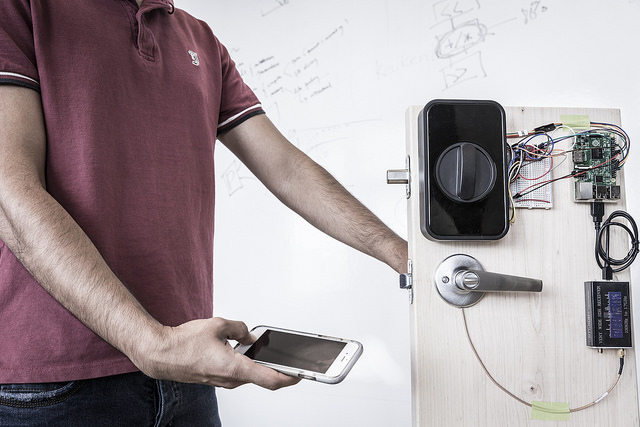Internet security and identity theft have always been an issue, and in today’s tech-heavy world, the problem is on the rise. Identity thieves have plenty of tricks up their sleeves, including viruses like Trojan horses, spyware, and key loggers to nab sensitive data. Understandably, people are seeking more security for vital information such as passwords and personal information kept online. Thanks to computer scientists and electrical engineers at the University of Washington, a new way to keep your information private has been discovered.

Image source: University of Washington.
According to the University of Washington’s website, the team has been working on sending passwords through the human body through low-frequency transmissions using fingerprint sensors and touchpads. Although fingerprint sensors have been used as an input device, the scientists and engineers reconfigured the fingerprint sensor as a means of sending out information.
“Fingerprint sensors have so far been used as an input device,” lead author and University of Washington assistant professor of Computer Science and Engineering, Shyam Gollakota, said. “What is cool is that we've shown for the first time that fingerprint sensors can be re-purposed to end out information that is confined to the body.”
The key to this is that the transmission would be more secure without having information coming out through the air. In comparison, transmission through Wi-Fi and Ethernet cables could still be intercepted by identity thieves. Sending passwords through the body minimizes information that identity thieves can intercept during data transmission.
Devices used in the university’s experiment include the iPhone, Lenovo laptop trackpads, and Adafruit capacitive touchpads. Overall, 10 subjects participated in the study, and transmission was proven possible regardless of the person’s height, weight, and body type. Testing was also done with subjects performing body movements.
Because they generate two- to 10-MHz frequencies, fingerprint sensors and touchpads are said to work best. As for the process itself, it involves having the data pass through the body to a receiver on a device that confirms the information. According to the researchers, this is only the first step. What’s next is finding fingerprint manufacturers to access their software so they can make transmission ever faster.
Advertisement
Learn more about Electronic Products Magazine





